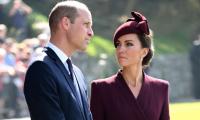It was undoubtedly a historic moment when last month a North Korean ruler entered South Korea for the first time – the two had been at war with each other since 1953.
Last year, I had the opportunity to represent Pakistan at an international peace summit in Seoul, the capital of South Korea. In an article at the time, I had explained in detail that even after 70 years of separation, South Koreans still strongly hope for a peaceful reunification with their northern brethren. My words have proven true after the recent visit of the North Korean ruler.
The Korean Peninsula was once a unified country but the power politics of the imperialists resulted in its division. Interestingly, both the sovereign states celebrate independence on the same day, August 15.
The national flag of South Korea reflects peace and purity, balance in the universe and movement and harmony in society. On the other hand, the North Korean flag, with a red star, stands typically for a communist and socialist regime. The display of the North Korean flag is prohibited in South Korea. A unification flag is used to represent both the Korean states when they perform as a single team in sporting events.
North Korea has since day one been ruled by the Kim dynasty, with the state’s control being passed from the father to the son. Contrary to this, South Korea is a modern democratic country which has had 11 rulers changed so far, and has emerged as a country that protects human rights and democratic values. South Korea also has the honour of electing the first female president Park Geun-hye, who is also the first female president popularly elected in the whole of East Asia.
The North Korean military is considered to be the world’s fourth largest military. Every citizen is required to undergo some sort of military training. According to media reports, North Korea has at least 10 nuclear warheads, whereas South Korea has kept away from participating in the race. While North Korea tries to secure its future through achieving nuclear weapons and missiles, South Korea, supported by the US and other Western countries, tries to develop itself as a modern country which is also the world’s biggest investor in research, smartphone and other digital technology. Its leading mobile manufacturing company, Samsung, is popular across the globe. In North Korea, only one out of every 10 person has a mobile phone.
While North Korea has restricted its citizens from accessing internet, people in South Korea enjoy the world’s fastest average internet speed, 28.6 Mbps. The government is rapidly rolling out 1 GB per second connections, which is 142 times faster than the average speed offered globally and 79 times faster than the average speed available in the US. About 45 million people or 92.4 percent of the South Korean population are internet users. Ironically, there are reportedly only 28 websites available for North Koreans to visit, most of which contain state propaganda.
North Korea also lags far behind in infrastructure development. Reportedly, only three percent of the roads in North are actually paved, and only 11 out of every 1,000 citizens are able to own a car. Long queues can be observed at bus stops throughout the country. On the other hand, South Korea has extensive networks of railways, motorways, highways, bus routes, ferry services and air routes, and almost 92 percent of the roads are paved. South Korea is also the third country in the world where maglev trains are being operated on a commercial basis. Approximately 15 million tourists visit South Korea every year.
The North Korean economy is highly dependent on coal exports to neighbouring China, and is considered one of the world’s poorest countries. However, the South Korean economy is the fourth largest in Asia and the 11th largest in the world. South Korean universities are ranked among the world’s top universities. The country’s youth is highly educated and is said to perform well in every field. Various high-tech giants are located in South Korea, whereas the local film industry is also labelled as the Hollywood of the East.
Interestingly, the progress in South Korea is based on a five-year long term development plan that was borrowed from the government of Pakistan during president Ayub Khan’s era. Photos of then finance minister and economist Dr Mahbub ul Haq are still present in South Korean offices as a tribute to him. However, we failed to transform Pakistan as an Asian Tiger due to our internal and regional issues.
I believe that the North Korean ruler’s visit to South Korea will have positive impacts on regional peace and world harmony. Most importantly, a strong message has been delivered to the international community that both the Koreas are committed to ensuring peace and stability and that North Korea must not be considered a threat to the region any more. The peace-loving international community is very hopeful that people of both the states will join hands to take the Korean Peninsula towards progress and prosperity collectively.
The writer is a member of the National Assembly and patron-in-chief of the Pakistan Hindu Council.
Twitter: @RVankwani
Pakistan has been sending its cricket team to India despite bilateral tension in past, proving to be responsible country
Despite multiple bailouts, Pakistan remains mired in inflation, debt, and stagnation
Govt should prioritise developing public transport solutions that are both sustainable and use technology with low...
During turbulent years before and after 2010, Bilour family stood out for sacrifices, paying in blood for their...
Lahore, city of 14 million people, has – again – topped rankings of world’s most polluted air
Over 50% of Pakistan’s cigarette market is controlled by illegal manufacturers who evade taxes







